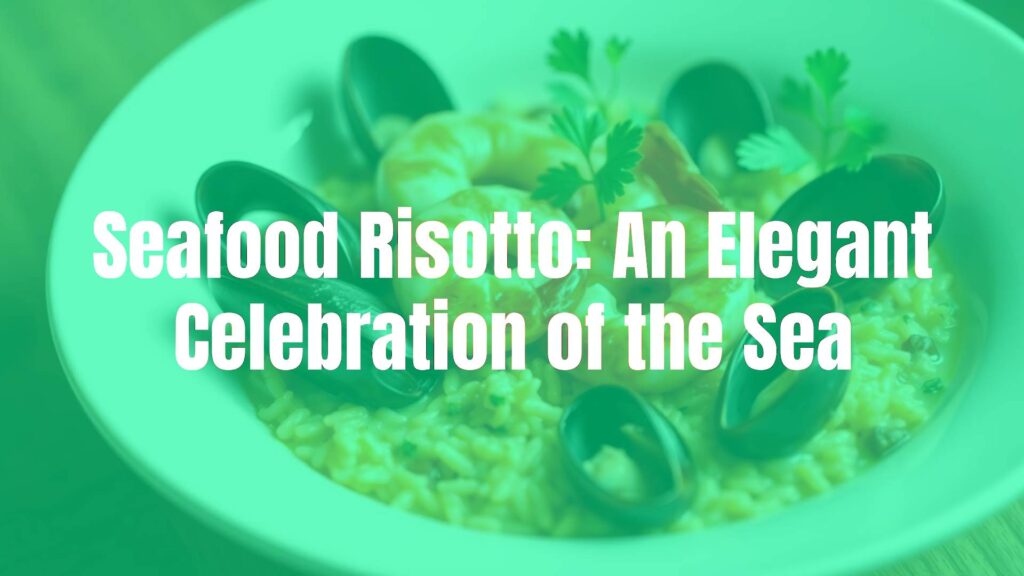Exploring the Essence of Seafood Risotto
Seafood risotto, or risotto ai frutti di mare, is one of the crowning jewels of Italian coastal cuisine. This dish beautifully marries the creamy, comforting texture of classic risotto with the bright, briny flavors of the sea, resulting in a meal that feels simultaneously luxurious and approachable.
Defining Characteristics
Distinguished by its silky rice base and a medley of seafood, seafood risotto stands out for its balance between richness and freshness. Every grain of rice becomes infused with the savory essence of shellfish, fish, and aromatic broth, delivering a nuanced flavor profile. The finished dish is characteristically moist but not soupy, with each grain of rice al dente at its core, providing a unifying texture for the array of coastal delicacies.
Historical and Regional Significance
Risotto originated from northern Italy, especially within the regions of Lombardy and Veneto, where rice paddies are abundant. While risotto itself is a northern specialty, the seafood variation finds its heart in Italy’s coastal areas, particularly in Liguria, Marche, and along the Adriatic and Tyrrhenian shores. Here, communities with deep fishing traditions have elevated seafood risotto as both an everyday staple and a celebratory dish, often enjoyed during gatherings and festive occasions.
Core Ingredients
At the heart of seafood risotto lies a short-grain rice variety, most commonly Arborio, Carnaroli, or Vialone Nano, prized for their ability to absorb liquid while retaining a subtle firmness. The seafood ensemble can include a mix of shrimp, mussels, clams, squid, scallops, and small fish. White wine, homemade or high-quality fish stock, garlic, shallots or onions, and a hint of fresh parsley lend aromatic depth. Olive oil is often preferred over butter, allowing the natural flavors of the seafood to shine through, while a whisper of lemon zest at the end can add a bright, refreshing finish.
Common Variations and Adaptations
The beauty of seafood risotto lies in its adaptability. The mix of seafood is frequently dictated by local catches or personal preference. Some regional versions may feature lobster or crayfish for special occasions; others might swap in cuttlefish ink for a striking black appearance and a more intense oceanic taste. Occasionally, tomatoes or a touch of saffron are folded in, offering subtle color and complexity. Vegetarian adaptations might use seaweed-based broths and non-animal seafood substitutes, catering to a broader range of dietary needs.
Serving and Pairings
Seafood risotto is typically presented as a main course, often garnished with a sprig of fresh herbs or a drizzle of extra virgin olive oil. It is best served immediately, ensuring the perfect creamy consistency. To complement its flavors, pair the dish with a crisp, mineral-forward Italian white wine such as Vermentino, Pinot Grigio, or Verdicchio. Lightly dressed salads or roasted vegetables can create a balanced meal, while simple focaccia or crusty bread helps savor every last flavorful bite.
Conclusion
Celebrated for its elegance and expressive taste, seafood risotto embodies the artful blending of land and sea, grain and shellfish, tradition and innovation. It stands as a testament to Italy’s culinary diversity and the abundant gifts of its coastal regions, offering diners a truly memorable experience anchored in both simplicity and sophistication.

